Understanding the Complex Intersection of Autism and Deafness
Autism Spectrum Disorder (ASD) and deafness are conditions that, when co-occurring, create unique developmental challenges and opportunities for tailored intervention. While each condition has distinct characteristics, their overlap becomes complex due to shared behavioral features and diagnostic difficulties. The growing body of research emphasizes increased prevalence rates of autism among deaf children and highlights the importance of nuanced assessment strategies, specialized support, and awareness initiatives to promote better outcomes. This article explores the relationship between autism and deafness, the diagnostic challenges, recent research findings, and effective support strategies, emphasizing the need for a comprehensive, culturally sensitive approach.
Prevalence and Characteristics of Autism in Deaf Populations
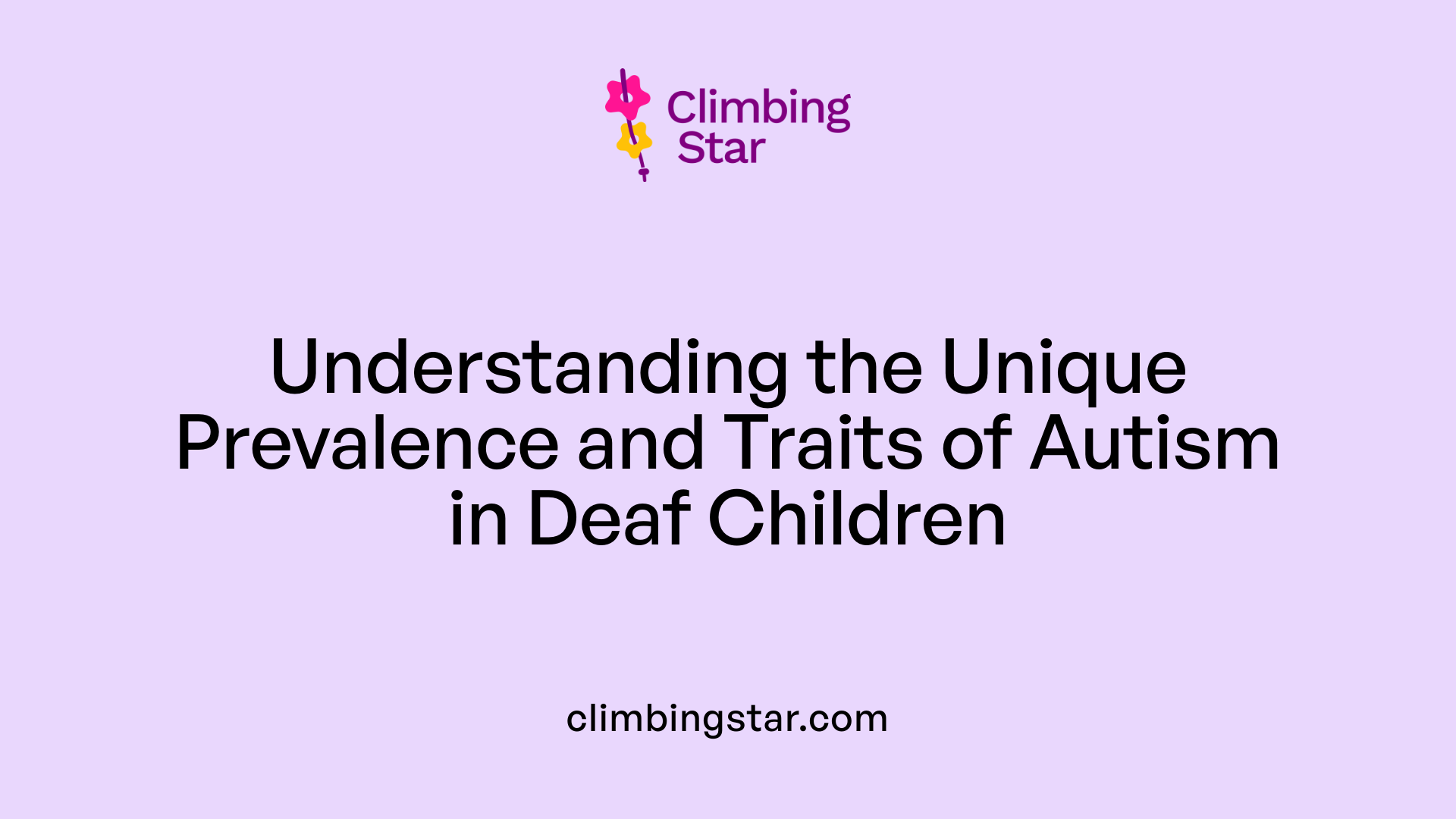
What is known about the prevalence and characteristics of autism within deaf populations?
Autism spectrum disorder (ASD) is notably more common among children who are deaf or hard of hearing (D/HH) than in the general population. Research indicates that roughly 7% to 9% of D/HH children are diagnosed with autism, a significant increase from the about 1.7% to 2% prevalence seen in the broader population.
Many children with autism who are D/HH also have altered hearing abilities. Approximately half of these autistic deaf children experience sensorineural hearing loss, such as auditory neuropathy, which affects how sound is processed and can complicate diagnosis and intervention.
Behaviorally, these children often display signs overlapping with typical deafness, like language delays and social withdrawal. However, they may also show distinct autistic traits, including limited eye contact, stereotyped movements, insistence on routines, unusual interests, and challenges with sensory processing. Some behaviors, like mirroring sign language towards themselves instead of others, can serve as subtle indicators of autism.
The high rates of co-occurrence are believed to stem from shared underlying etiologies—common causes such as prematurity, congenital infections like cytomegalovirus, and genetic syndromes including fragile X syndrome, CHARGE syndrome, Trisomy 21, and Usher syndrome. These factors contribute to the overlapping presentation of deafness and autism.
Overall, children within this population face unique developmental hurdles due to the interplay of sensory impairments and autistic behaviors. Recognizing these challenges emphasizes the need for specialized assessment and tailored support strategies, aiming to improve social, communicative, and behavioral outcomes for these children.
Assessment and Diagnosis Challenges in Children with Both Conditions
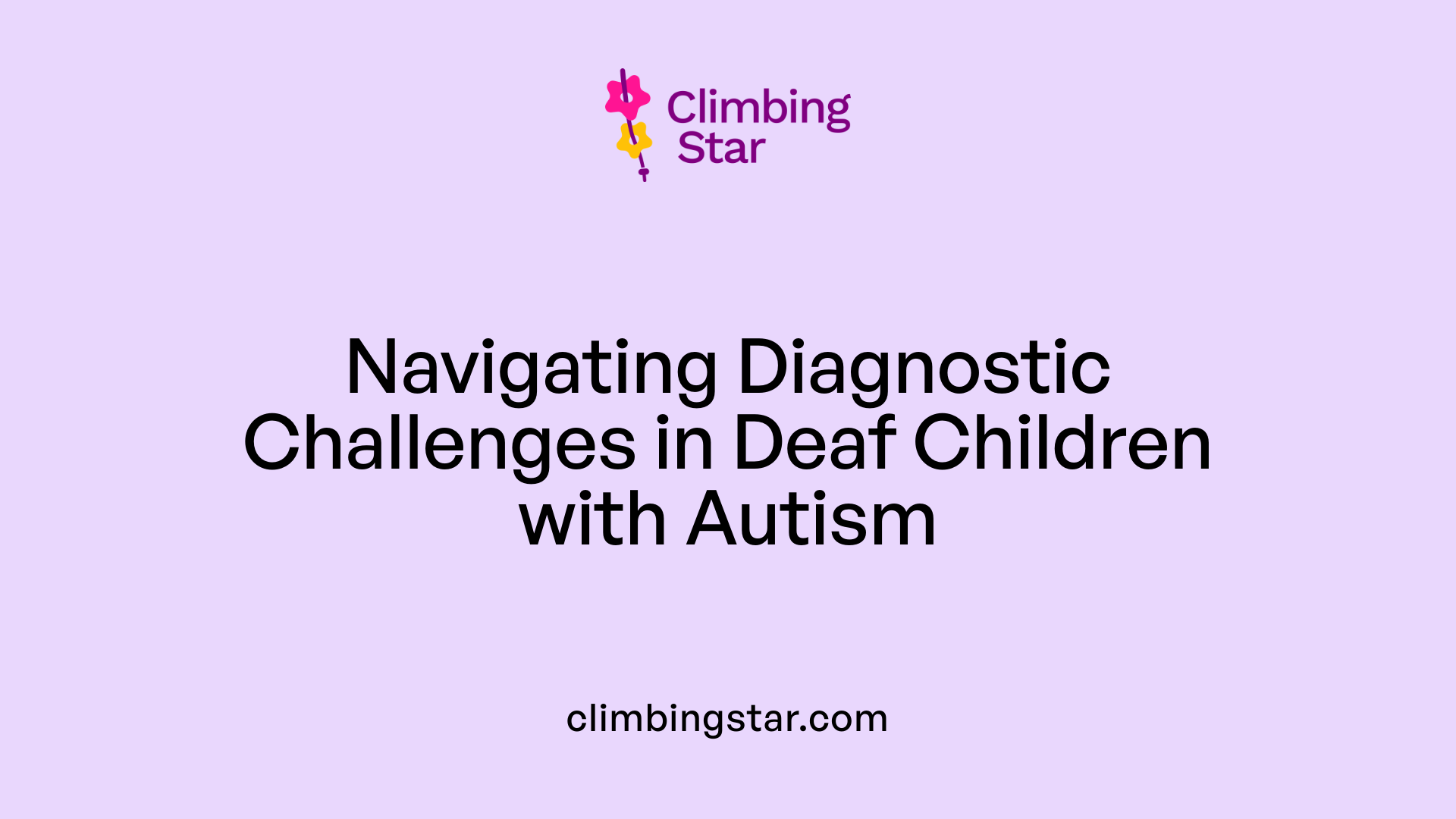
What are the challenges in diagnosing autism in deaf children?
Diagnosing autism in deaf children involves navigating complex overlaps between behaviors caused by hearing loss and those characteristic of autism. Many deaf children exhibit delays in language development, limited eye contact, and social withdrawal, which can be mistaken for autism or vice versa. This makes careful clinical assessment crucial.
One significant obstacle is the absence of standardized, validated diagnostic tools that are specifically designed for children who are deaf or hard of hearing (D/HH). The commonly used autism assessments, such as the Autism Diagnostic Observation Schedule, Second Edition (ADOS-2), have limitations when applied directly to D/HH children. These tools often require modifications, particularly when used with sign language users, but some adapted versions are still under validation.
Furthermore, behavioral phenotypes often overlap, including repetitive movements or sensory sensitivities that might relate to hearing impairment rather than autism. Communication barriers also exacerbate the difficulty, as language delays caused by environmental factors may mimic autism symptoms. These challenges can lead to delayed diagnosis, with some children being identified as autistic several years later than hearing children.
To improve accuracy, clinicians rely heavily on a comprehensive, multidisciplinary approach. This involves audiologists, psychologists, speech-language pathologists, and other specialists working together. They utilize a combination of behavioral observations, developmental history, parent reports, and clinical judgment, especially since fully validated tools are limited for this population. This culturally sensitive evaluation process helps distinguish between deafness-related behaviors and autism.
In light of these challenges, ongoing research aims to refine assessment methods tailored specifically for deaf children. For instance, adaptations of the ADOS-2 and the Autism Diagnostic Interview-Revised (ADI-R) include modifications to tasks, scoring, and communication mode considerations to better serve sign language users.
In summary, diagnosing autism in deaf children requires a nuanced, interdisciplinary approach that respects cultural and communication differences. Tailored assessment strategies are vital for early detection, which can significantly improve intervention outcomes and support structures for these children.
Recent Research and Innovations in Understanding Autism in Deaf Children
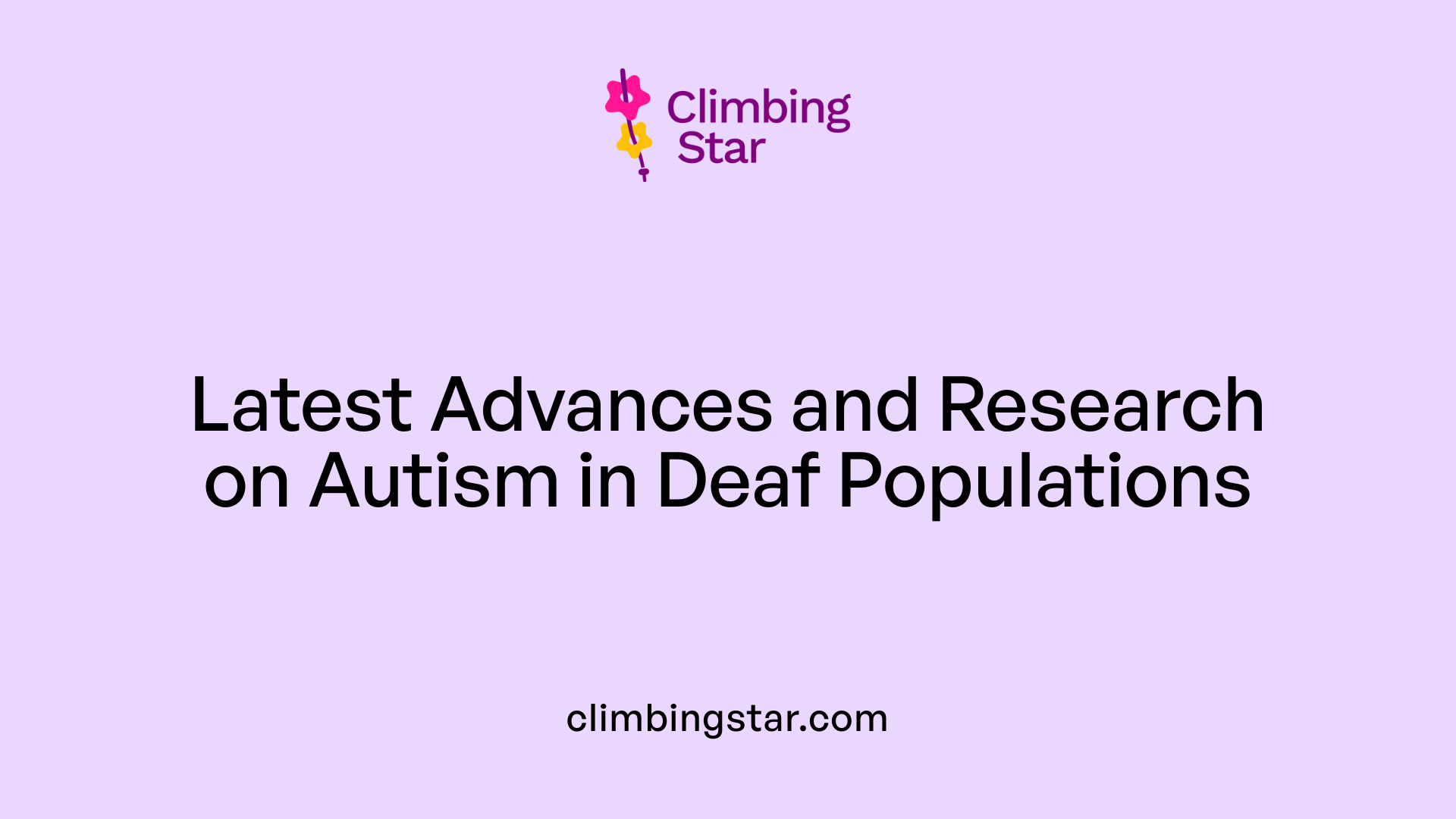
What are the key research findings on autism in deaf children?
Recent studies have confirmed that autism spectrum disorder (ASD) occurs more frequently in children who are deaf or hard of hearing (D/HH), with prevalence estimates ranging from 7% to 9%, significantly higher than the general population rate of about 1.7% to 2%. The Deaf Autism Project, led by researcher Aaron Shield at Boston University, stands out as one of the largest efforts to explore how autism affects deaf children, especially those learning sign language. This research aims to develop specific tools and interventions to better support these children.
Biological research plays a crucial role in understanding ASD in D/HH children. For instance, a study from the Medical University of South Carolina utilized a mouse model with a mutation in the MEF2C gene—linked to ASD in humans—to examine auditory nerve function. Findings revealed mild hearing loss, neural cellular degeneration, increased inflammation, and immune cell involvement such as glia and macrophages, highlighting a complex interaction between immune responses and nerve health. These insights suggest that abnormalities in sensory organs like the auditory nerve may contribute to ASD symptoms, emphasizing the importance of holistic neuroimmune research.
Innovative efforts are also focusing on improving diagnostic and support strategies. Because standard assessment tools like the ADOS-2 have limitations for D/HH children, adaptations and validation studies are underway, including versions tailored with modifications suitable for sign language users. Initiatives like the Child Oriented Mental Health Innovation Collaborative (COMIC) are working to create more reliable evaluation techniques. Moreover, educational and clinical programs now emphasize interdisciplinary approaches—combining audiology, speech therapy, psychology, and culturally aware practices—to ensure accurate diagnosis and personalized support plans.
These research advancements and collaborative efforts are vital in addressing the unique challenges faced by deaf children with autism. Better understanding of biological mechanisms and the development of specialized assessment tools lay the groundwork for earlier diagnosis, targeted interventions, and improved support systems, ultimately helping these children reach their full potential and participate more fully in society.
| Study Area | Key Findings | Implications |
|---|---|---|
| Prevalence Rates | ASD in deaf children around 7-9% | Significantly higher than general population |
| Biological Insights | Auditory nerve abnormalities, immune involvement | Guides targeted biological interventions |
| Assessment Tools Development | Adapted versions of ADOS-2 and ADI-R | Improve accuracy and cultural sensitivity |
| Interdisciplinary Approaches | Combining audiology, psychology, and speech | Ensures holistic, individualized diagnosis |
| Biological Models | Mouse models with MEF2C mutations | Reveal neuroimmune interactions in ASD |
Signs and Symptoms of Autism in Deaf Children
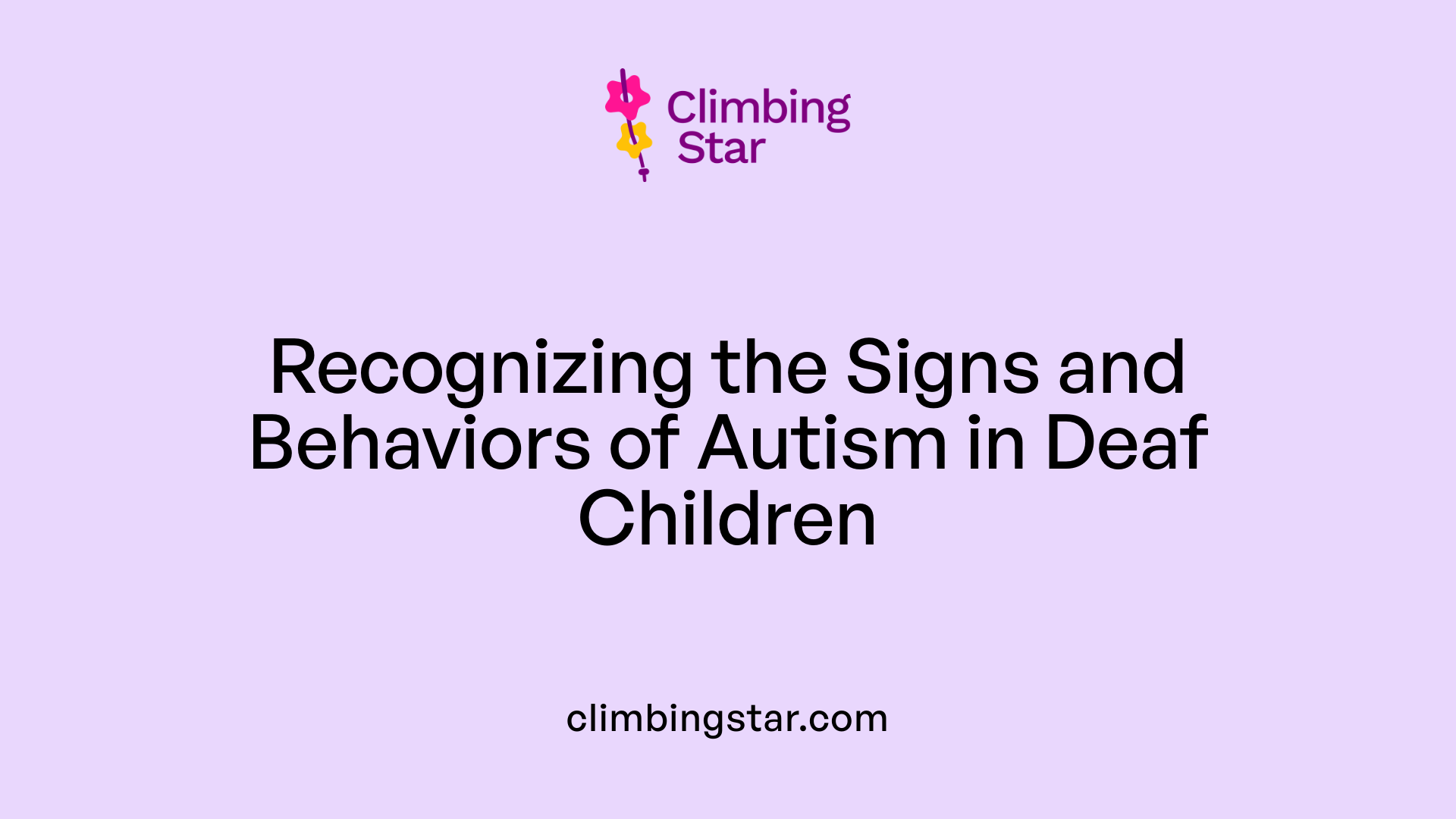
What are the signs and symptoms of autism in deaf children?
Detecting autism in deaf children can be challenging because some signs overlap with behaviors related to deafness itself. However, certain indicators suggest the presence of autism beyond typical deafness-related delays.
Behavioral indicators such as social withdrawal and repetitive behaviors are common. For instance, deaf children with autism might show limited eye contact and avoid social interactions with peers and adults. They may also display stereotyped movements like hand-flapping, rocking, or toe-walking, which are typical self-stimulatory behaviors.
Communication behaviors are also telling. Children with autism often have limited gestures and struggle to understand facial expressions, which inhibits effective social communication. They might not respond to their name, show little interest in sharing attention, or use fewer signs if they are sign language users.
Sensory sensitivities are prominent. Some children are hypersensitive or hyposensitive to sights, sounds, textures, or textures, leading to unusual reactions to sensory input. They may intensely react to certain noises or visual stimuli, or show a lack of response to sounds that typically attract attention.
Additionally, many children exhibit unique interests focused on specific objects, sounds, or topics, often engaging in repetitive or restrictive activities related to these interests.
Language delays are frequently observed but can be difficult to distinguish from those caused by deafness. Social withdrawal, indifference to social cues, and playing alone are behaviors that are characteristic of autism but could also be seen in deaf children with communication challenges.
Ultimately, recognizing these signs requires careful and thorough assessment by specialists experienced with deaf culture and adapted diagnostic tools, to differentiate between autism and typical deafness-related development issues.
Support Strategies and Educational Accommodations for Autistic Deaf Individuals
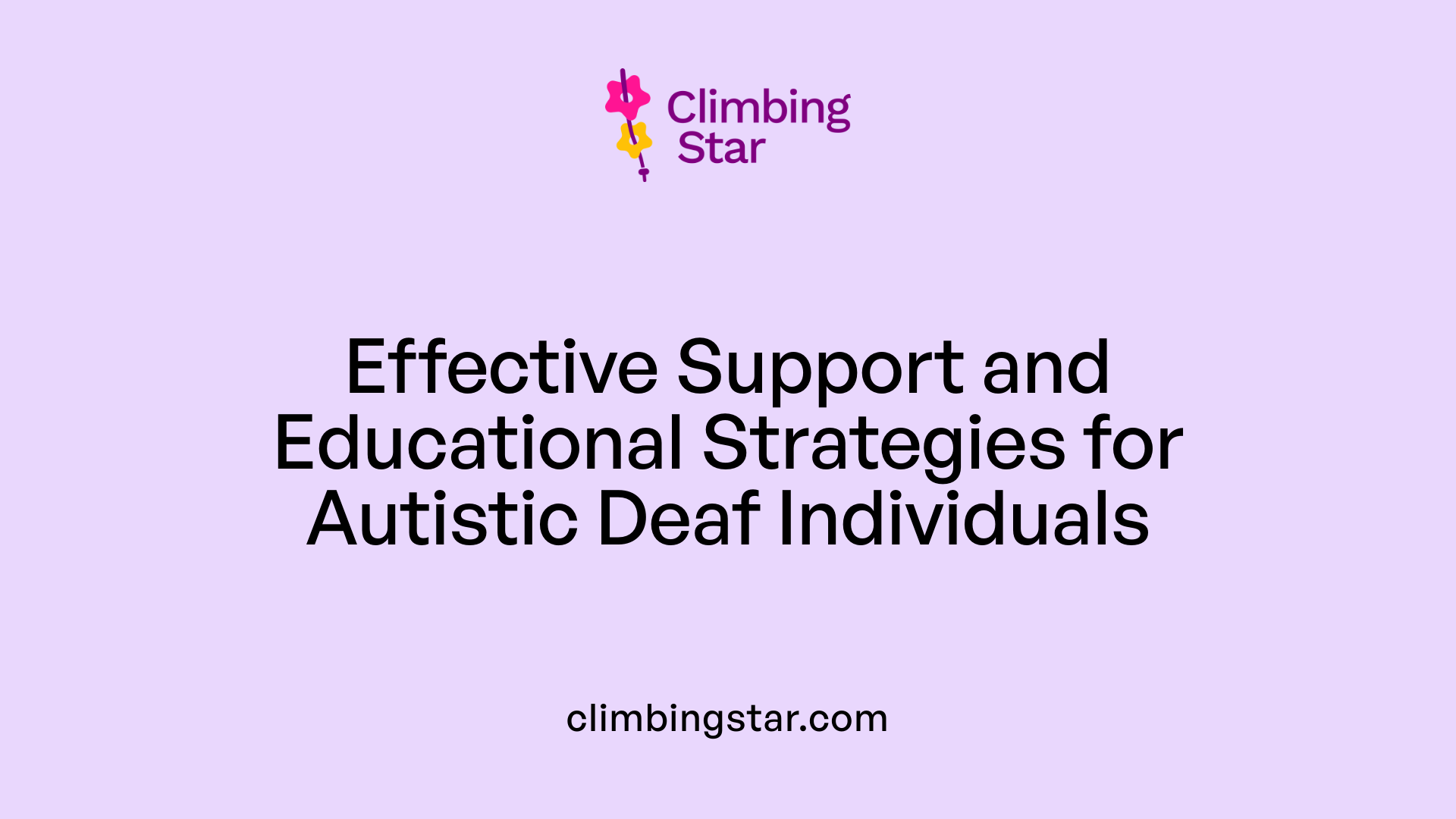
What support strategies and educational accommodations are effective for autistic deaf individuals?
Supporting autistic deaf children requires personalized, culturally sensitive approaches that honor their preferred communication methods, whether it be sign language, spoken language, or assistive devices. Developing individualized support plans is essential to address each child's unique needs.
Visual supports play a vital role in facilitating understanding and communication. These include visual schedules, social stories, and cue cards, which help children grasp routines and social expectations. Assistive listening devices, such as hearing aids or FM systems, improve auditory access, while sign language interpreters facilitate meaningful interaction.
Educational settings benefit from specific accommodations like extended testing time to reduce anxiety, written instructions to clarify tasks, and consistent support personnel to build trust and stability. These adaptations ensure that deaf autistic children can participate fully in learning activities.
Evidence-based practices are fundamental to effective support. Techniques such as modeling, prompting, and reinforcement promote skill development. Additionally, technology-assisted instruction, including interactive apps and communication devices, enhance engagement and learning.
Community and family involvement are crucial components. Regular collaboration among educators, speech therapists, audiologists, and families enables the creation of flexible, responsive support strategies that evolve with the child's development.
Overall, combining individualized planning, visual and technological supports, and proven educational methods fosters positive outcomes, empowering autistic deaf individuals to succeed academically, socially, and emotionally.
Medical, Psychological, and Developmental Implications of Co-occurring Autism and Deafness
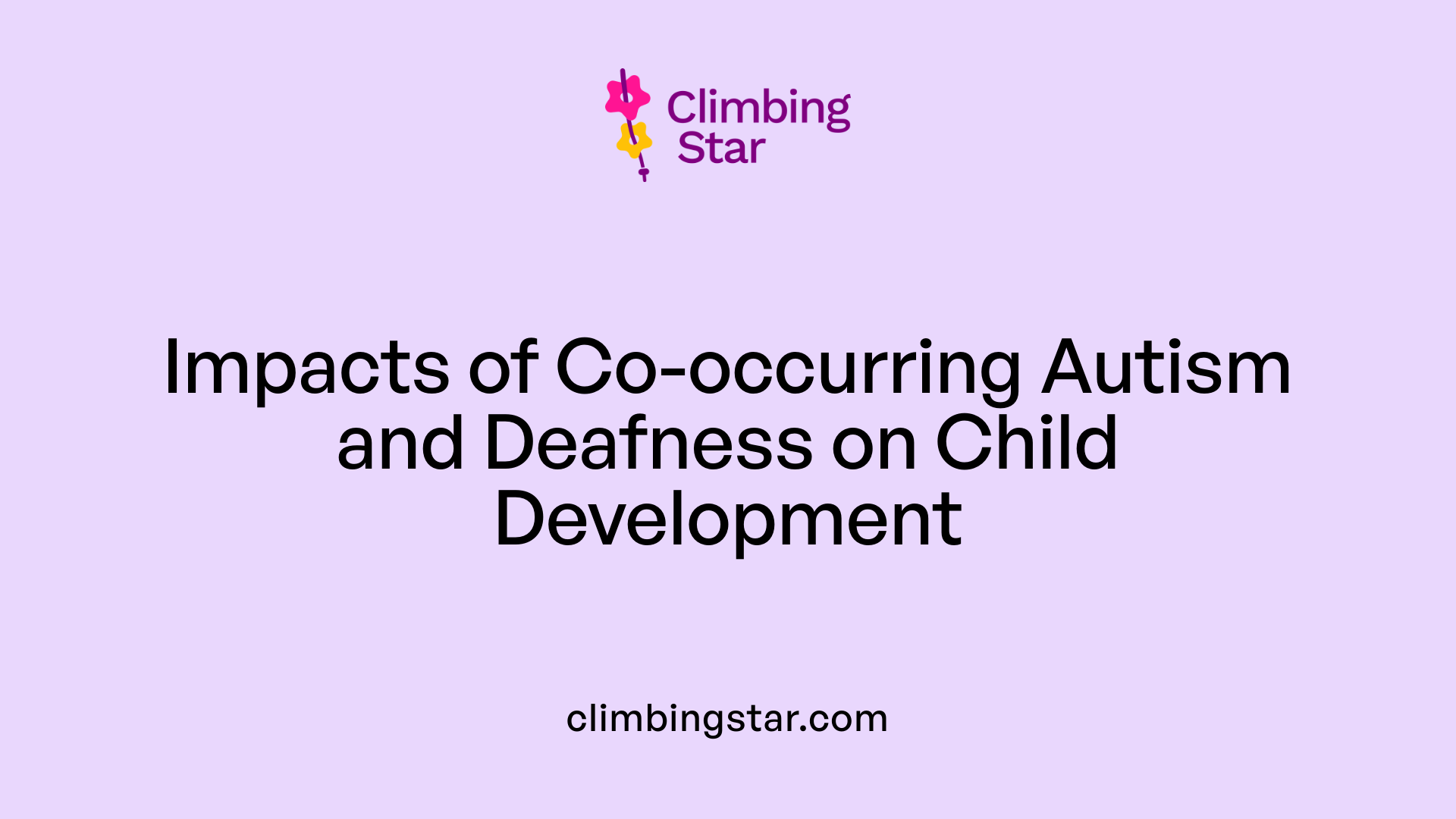
What are the medical, psychological, and developmental implications of co-occurring autism and deafness?
Children who experience both autism spectrum disorder (ASD) and deafness face a unique set of challenges that impact their overall development. These dual conditions often lead to complex medical and psychological issues that require carefully tailored interventions.
One major concern is the delay in diagnosis. Due to overlapping signs like language delays, social withdrawal, and communication difficulties, autism can be overlooked or misdiagnosed in deaf children. This delay hampers critical early intervention efforts that are essential for optimal development.
The presence of both conditions increases the risk for emotional and behavioral health problems. Many children with autism and deafness are more vulnerable to anxiety, mood disturbances, and social difficulties. Challenges in processing sensory information, as well as communication barriers, can exacerbate emotional distress.
Furthermore, co-occurring autism and deafness often involve additional disabilities, such as intellectual impairments, which further complicate treatment and support. These children may exhibit stereotyped behaviors, sensory sensitivities, and limited social engagement, affecting their learning and life skills.
Addressing these implications requires a multidisciplinary approach. Collaboration among audiologists, psychologists, speech and language therapists, and mental health professionals is vital. Early, individualized intervention strategies can foster better communication, social skills, and emotional resilience.
Supporting children with both autism and deafness means not only focusing on language and communication but also addressing emotional health and fostering inclusive environments. This comprehensive care helps promote their neurodevelopment, emotional well-being, and social integration, laying a foundation for improved quality of life.
Raising Awareness and Promoting Inclusive Practices
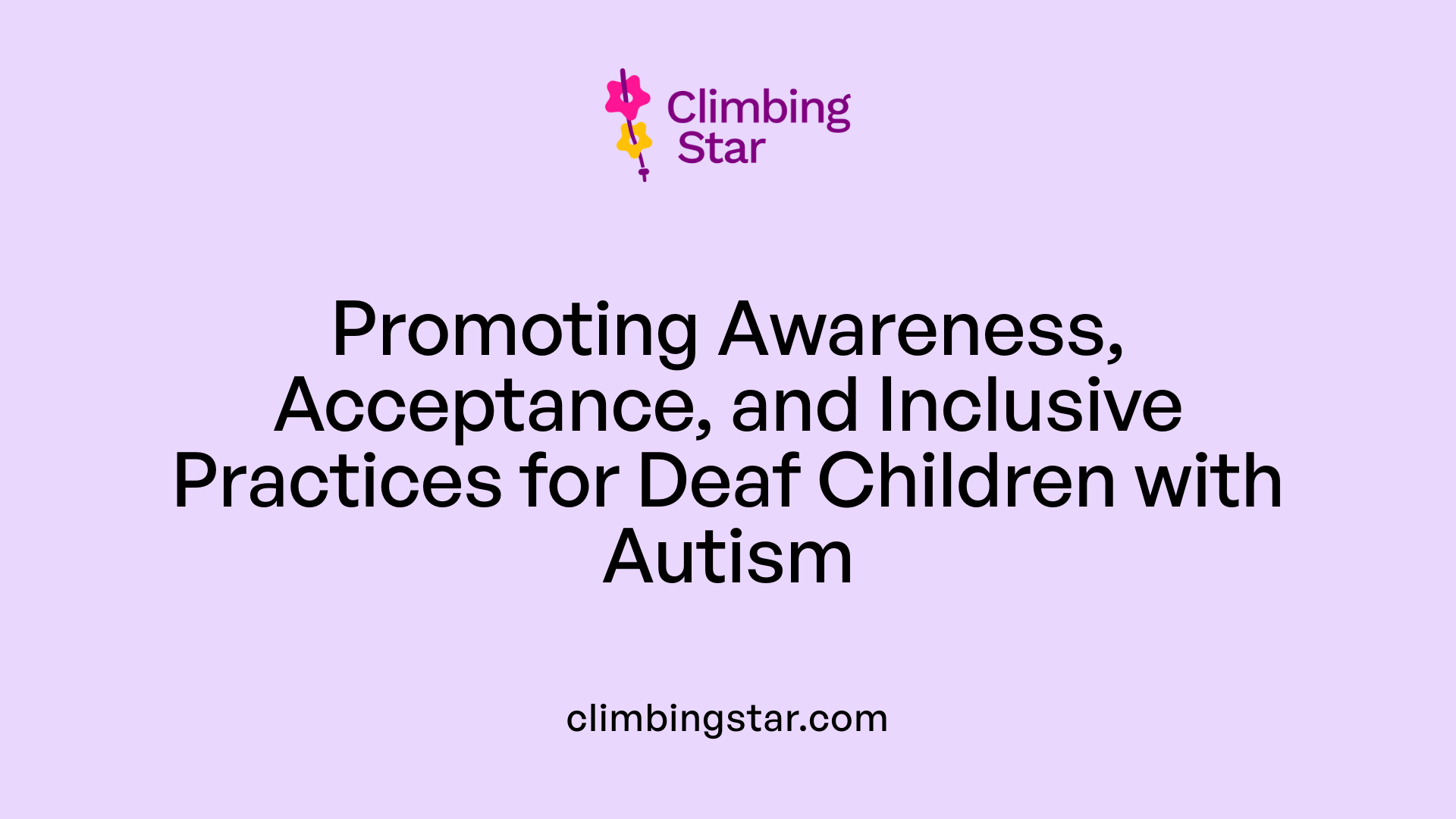 Community and professional education initiatives play a crucial role in improving understanding of autism in children who are Deaf or Hard of Hearing (D/HH). These programs train educators, clinicians, and families to recognize the subtle signs of ASD, such as behaviors like mirroring sign language toward oneself or unusual responses to social cues. Emphasizing culturally sensitive assessment methods tailored for D/HH children helps facilitate early identification.
Community and professional education initiatives play a crucial role in improving understanding of autism in children who are Deaf or Hard of Hearing (D/HH). These programs train educators, clinicians, and families to recognize the subtle signs of ASD, such as behaviors like mirroring sign language toward oneself or unusual responses to social cues. Emphasizing culturally sensitive assessment methods tailored for D/HH children helps facilitate early identification.
Early screening programs are essential for timely diagnosis. Specialized, culturally adapted assessment tools like modified versions of the ADOS-2 and ADI-R help differentiate between deafness-related language delays and true autism symptoms. By integrating these adaptations, professionals can better identify ASD even in children with diverse communication modes, including sign language.
Reducing stigma and fostering acceptance within the community are vital. Public awareness campaigns, outreach events, and community education efforts aim to dispel misconceptions about autism and deafness. These initiatives promote a supportive environment where individuals receive appropriate assessments and interventions without fear of judgment.
Ongoing training for professionals ensures they are well-equipped to provide inclusive services and advocate for the rights of autistic deaf individuals. As Dr. Danielle Previ highlights, increasing awareness can prevent long delays in diagnosis, which is often a problem in this population.
Through coordinated efforts in education, early screening, and community engagement, society can better support the unique needs of deaf children with autism, enhancing their development, social integration, and overall well-being.
| Initiative Type | Focus | Outcomes | Additional Details |
|---|---|---|---|
| Community Education | Public awareness about autism and deafness | Reduced stigma, increased acceptance | Campaigns, outreach events, informational resources |
| Professional Training | Culturally sensitive assessment techniques | Early diagnosis, accurate identification | Workshops, specialized training modules |
| Early Screening Programs | Targeted screening using adapted tools | Timely intervention, improved support | Integration with existing hearing screening protocols |
| Policy and Advocacy | Inclusive policies and support plans | Better educational and social inclusion | Legislative support, supporting services |
Enhancing awareness and fostering inclusive practices is essential to better serve autistic children who are Deaf or Hard of Hearing, ensuring they receive the understanding, support, and opportunities they deserve.
Towards a More Inclusive Future
Recognizing the intricate relationship between autism and deafness is essential for developing effective diagnosis, intervention, and support systems. Advances in research, assessment adaptation, and community awareness are enabling more accurate identification and personalized support for autistic deaf individuals. Emphasis on early detection, culturally sensitive practices, and inclusive education forms the foundation for inclusion and empowerment. Building awareness within the deaf community and among professionals will foster acceptance, reduce stigma, and promote access to vital services. Continued collaboration across disciplines, research, and advocacy is vital for ensuring that every autistic deaf individual has the opportunity to thrive in an inclusive society.
References
- Assessing Autism in Deaf/Hard-of-Hearing Youths
- Gallaudet psychology expert raises awareness about ...
- Beyond the brain: A link between hearing loss and autism ...
- The Deaf Autism Project
- When It's More Than Hearing Loss: Be attuned to signs of ...
- Deafness and autism
- How autism and auditory processing disorder affect hearing
- Working with Autistic Deaf Students
- Is It Autism or Hearing Loss?







